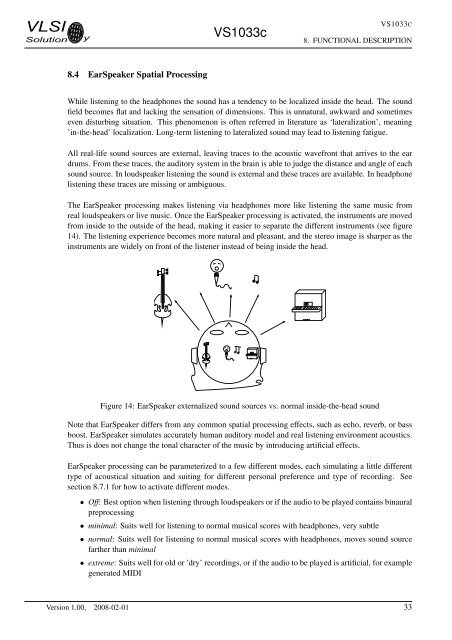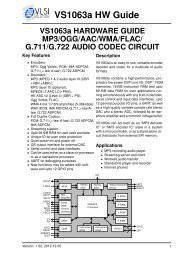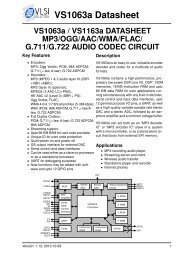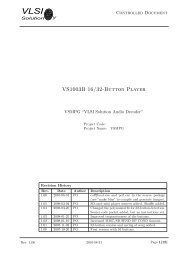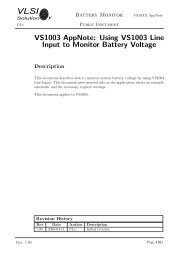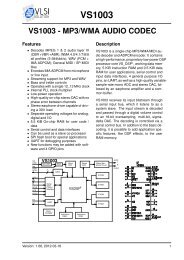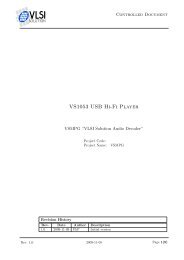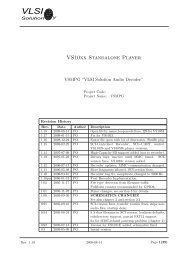VS1033 - MP3/AAC/WMA/MIDI AUDIO CODEC - VLSI Solution
VS1033 - MP3/AAC/WMA/MIDI AUDIO CODEC - VLSI Solution
VS1033 - MP3/AAC/WMA/MIDI AUDIO CODEC - VLSI Solution
You also want an ePaper? Increase the reach of your titles
YUMPU automatically turns print PDFs into web optimized ePapers that Google loves.
<strong>VLSI</strong><strong>Solution</strong> y<strong>VS1033</strong>c<strong>VS1033</strong>C8. FUNCTIONAL DESCRIPTION8.4 EarSpeaker Spatial ProcessingWhile listening to the headphones the sound has a tendency to be localized inside the head. The soundfield becomes flat and lacking the sensation of dimensions. This is unnatural, awkward and sometimeseven disturbing situation. This phenomenon is often referred in literature as ‘lateralization’, meaning’in-the-head’ localization. Long-term listening to lateralized sound may lead to listening fatigue.All real-life sound sources are external, leaving traces to the acoustic wavefront that arrives to the eardrums. From these traces, the auditory system in the brain is able to judge the distance and angle of eachsound source. In loudspeaker listening the sound is external and these traces are available. In headphonelistening these traces are missing or ambiguous.The EarSpeaker processing makes listening via headphones more like listening the same music fromreal loudspeakers or live music. Once the EarSpeaker processing is activated, the instruments are movedfrom inside to the outside of the head, making it easier to separate the different instruments (see figure14). The listening experience becomes more natural and pleasant, and the stereo image is sharper as theinstruments are widely on front of the listener instead of being inside the head.Figure 14: EarSpeaker externalized sound sources vs. normal inside-the-head soundNote that EarSpeaker differs from any common spatial processing effects, such as echo, reverb, or bassboost. EarSpeaker simulates accurately human auditory model and real listening environment acoustics.Thus is does not change the tonal character of the music by introducing artificial effects.EarSpeaker processing can be parameterized to a few different modes, each simulating a little differenttype of acoustical situation and suiting for different personal preference and type of recording. Seesection 8.7.1 for how to activate different modes.• Off: Best option when listening through loudspeakers or if the audio to be played contains binauralpreprocessing• minimal: Suits well for listening to normal musical scores with headphones, very subtle• normal: Suits well for listening to normal musical scores with headphones, moves sound sourcefarther than minimal• extreme: Suits well for old or ’dry’ recordings, or if the audio to be played is artificial, for examplegenerated <strong>MIDI</strong>Version 1.00, 2008-02-01 33


